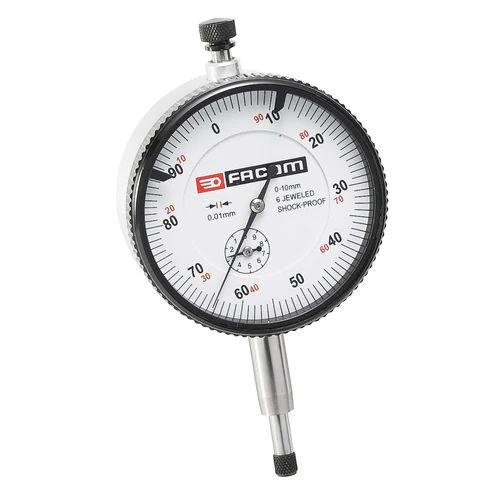Dial test indicators, often termed as DTIs or lever indicators, are precision measurement tools employed extensively in various engineering applications. From facilitating alignment procedures to ensuring the ideal tolerances in manufacturing, these instruments have made their mark due to their accuracy and versatility. Let’s dive deep into the world of dial test indicators and explore everything from their basic principles to advanced techniques used by seasoned professionals.
Understanding the Basics
What is a Dial Test Indicator?
A dial test indicator consists of a dial face (similar to a watch face), a needle, and a lever that protrudes from the instrument’s body. This lever pivots from a point within the indicator and has a ball or point at its end. When the lever is moved, the needle on the dial provides a reading.
Applications
DTIs are predominantly used in:
- Aligning workpieces on machine tools.
- Comparing measurements to known standards.
- Detecting out-of-roundness in rotating components.
- Checking the flatness or parallelism of surfaces.
Setting Up the Dial Test Indicator
Mounting: DTIs are typically mounted on magnetic bases or stands. Ensure that the base is firmly attached to a stable surface, keeping vibrations to a minimum.
Zeroing: Before any measurement, the DTI must be zeroed. This is done by placing the probe on a known flat surface, adjusting the dial face until the zero aligns with the needle.
Probe Placement: The probe should contact the workpiece at a slight angle – typically around 10-15 degrees. This ensures maximum sensitivity and accuracy.
Reading the Dial
Dial test indicators can seem complex due to the numerous lines and numbers on the dial face. Here’s a quick guide:
- Primary Reading: This is the number the needle points to directly. If the needle points to 10, and each division is 0.01mm, then the primary reading is 0.10mm.
- Revolution Counter: Some DTIs have additional counters to indicate full revolutions of the needle. This aids in understanding if the needle has gone around the dial more than once.
Advanced Techniques for Professionals
- Double DTI Setup: Pros sometimes use two dial test indicators simultaneously to measure two different points of a workpiece. This helps in determining the parallelism of large surfaces.
- Utilizing Maximum Sensitivity: To ensure maximum accuracy, position the DTI so that the movement of the workpiece covers the maximum range on the dial. If the needle only moves slightly for a considerable workpiece movement, sensitivity is lost.
- Compensating for Backlash: Mechanical DTIs may have a small amount of backlash, which can lead to errors in reading. To counter this, always approach the measurement from the same direction. If you overshoot, go back beyond the desired point and approach again.
- Cross-Checking with Other Instruments: To ensure the DTI is reading correctly, professionals often cross-check measurements using micrometers or other precision tools. This helps identify any potential calibration issues.
- Environmental Considerations: Temperature and humidity can influence readings. Professional setups may require controlled environments to maintain consistent accuracy.
- Custom Tips: While most DTIs come with a standard ball tip, seasoned users might replace these with customized tips designed for specific applications, providing better contact and more accurate readings.
Maintenance and Care
Like all precision instruments, dial test indicators require careful handling and maintenance to ensure their longevity and accuracy.
- Clean after use: Wipe the DTI with a soft cloth to remove any dust or metal particles. Do not use abrasive materials.
- Regular Calibration: Over time, the DTI might lose its accuracy. Periodic calibration ensures it stays within the desired tolerance.
- Storage: Always store the DTI in its protective case when not in use. This protects it from dust, moisture, and potential impacts.
- Avoid Extremes: Never expose the DTI to extreme temperatures or moisture, as this can compromise its accuracy.
In Conclusion
Dial test indicators remain a cornerstone in precision measurement across industries. Their accuracy and versatility, from basic setups to pro techniques, underline their importance. Like all tools, mastery comes with understanding their nuances and practicing regularly. Whether you’re a novice looking to get started or a seasoned professional, there’s always more to explore and perfect in the realm of dial test indicators.

